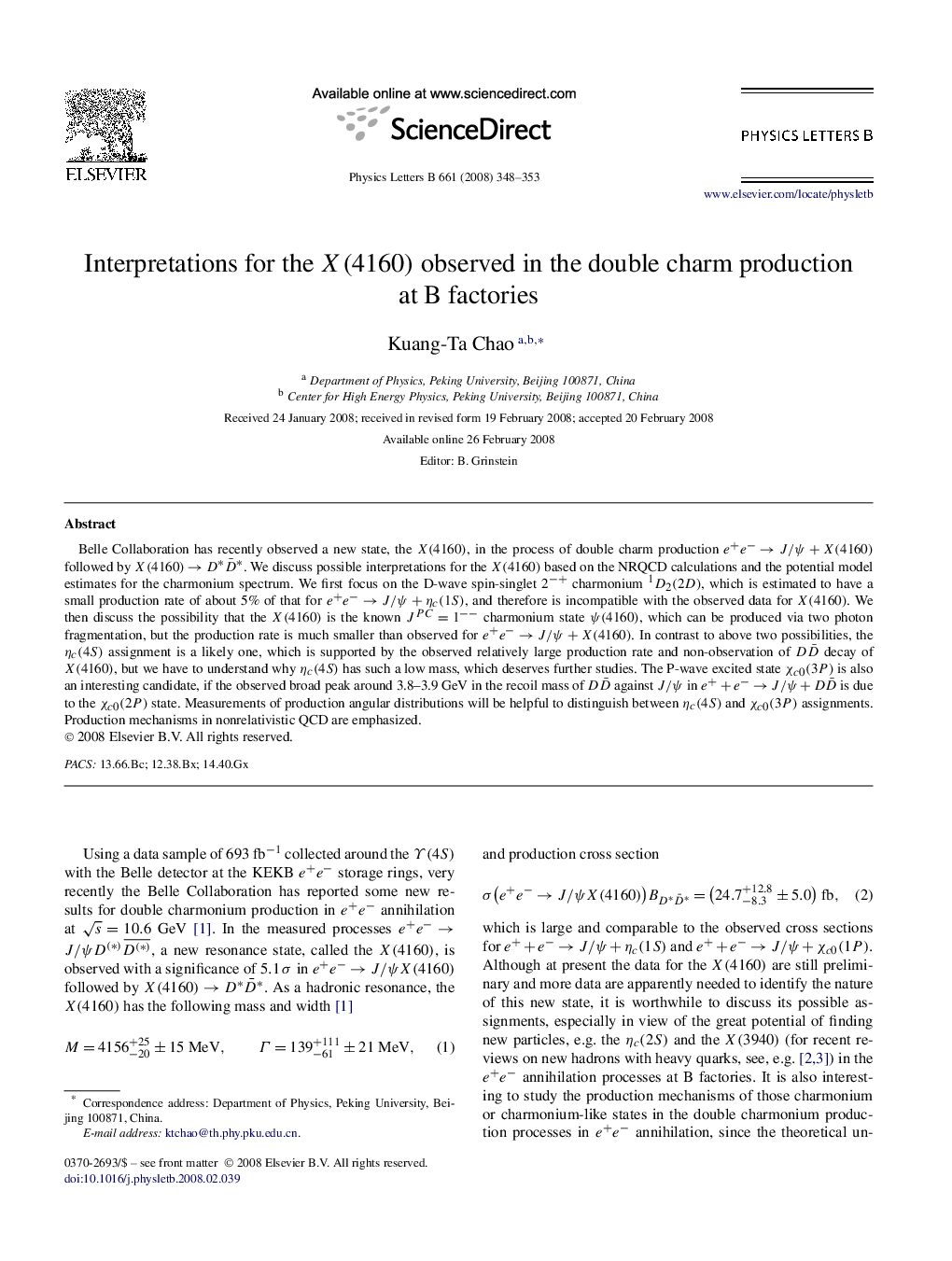| Article ID | Journal | Published Year | Pages | File Type |
|---|---|---|---|---|
| 1851417 | Physics Letters B | 2008 | 6 Pages |
Belle Collaboration has recently observed a new state, the X(4160)X(4160), in the process of double charm production e+e−→J/ψ+X(4160)e+e−→J/ψ+X(4160) followed by X(4160)→D∗D¯∗. We discuss possible interpretations for the X(4160)X(4160) based on the NRQCD calculations and the potential model estimates for the charmonium spectrum. We first focus on the D-wave spin-singlet 2−+2−+ charmonium D21(2D), which is estimated to have a small production rate of about 5% of that for e+e−→J/ψ+ηc(1S)e+e−→J/ψ+ηc(1S), and therefore is incompatible with the observed data for X(4160)X(4160). We then discuss the possibility that the X(4160)X(4160) is the known JPC=1−−JPC=1−− charmonium state ψ(4160)ψ(4160), which can be produced via two photon fragmentation, but the production rate is much smaller than observed for e+e−→J/ψ+X(4160)e+e−→J/ψ+X(4160). In contrast to above two possibilities, the ηc(4S)ηc(4S) assignment is a likely one, which is supported by the observed relatively large production rate and non-observation of DD¯ decay of X(4160)X(4160), but we have to understand why ηc(4S)ηc(4S) has such a low mass, which deserves further studies. The P-wave excited state χc0(3P)χc0(3P) is also an interesting candidate, if the observed broad peak around 3.8–3.9 GeV in the recoil mass of DD¯ against J/ψJ/ψ in e++e−→J/ψ+DD¯ is due to the χc0(2P)χc0(2P) state. Measurements of production angular distributions will be helpful to distinguish between ηc(4S)ηc(4S) and χc0(3P)χc0(3P) assignments. Production mechanisms in nonrelativistic QCD are emphasized.
